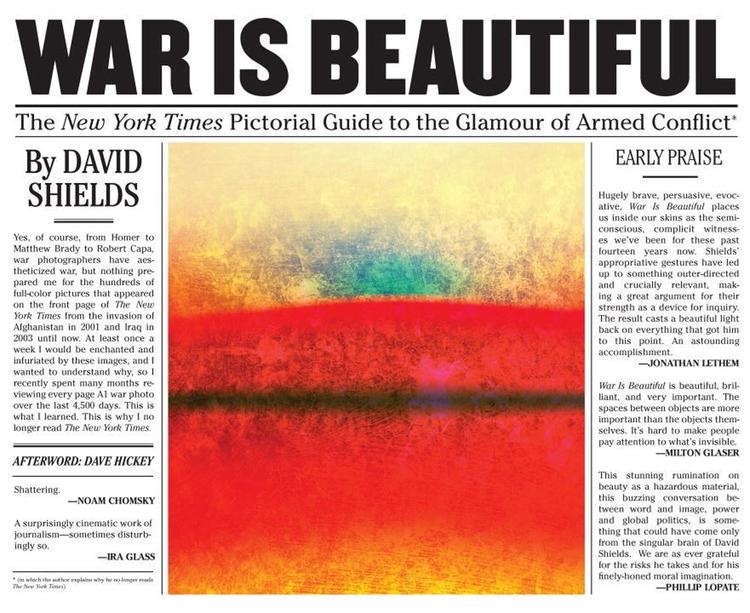Welcome to DU!
The truly grassroots left-of-center political community where regular people, not algorithms, drive the discussions and set the standards.
Join the community:
Create a free account
Support DU (and get rid of ads!):
Become a Star Member
Latest Breaking News
General Discussion
The DU Lounge
All Forums
Issue Forums
Culture Forums
Alliance Forums
Region Forums
Support Forums
Help & Search
Foreign Affairs
Related: About this forumWar is Beautiful: How Newspapers’ War Photography Conceals the Hideous Reality
http://www.juancole.com/2015/10/beautiful-newspapers-photography.htmlThe following is an excerpt from War Is Beautiful by David Shields
War is Beautiful: How Newspapers’ War Photography Conceals the Hideous Reality
By contributors | Oct. 29, 2015
By David Shields | (Informed Comment)
For decades, upon opening the New York Times every morning and contemplating the front page, I was entranced by the war photographs. My attraction to the photographs evolved into a mixture of rapture, bafflement, and repulsion. Over time I realized that these photos glorified war through an unrelenting parade of beautiful images whose function is to sanctify the accompanying descriptions of battle, death, destruction, and displacement. I didn’t completely trust my intuition, so over the last year I went back and reviewed New York Times front pages from the invasion of Afghanistan in 2001 until the present. When I gathered together hundreds and hundreds of images, I found my original take corroborated: the governing ethos was unmistakably one that glamorized war and the sacrifices made in the service of war.

The Times’s photographic aesthetic derives, in part, from the paper’s history. Patriarch and publisher Adolph Ochs bought the paper and transformed it into an institutional power. “All the news that’s fit to print.” “The paper of record.” Altough Ochs’s mother and father, who were German-Jewish, had each come to the United States in the 1840s to escape anti-Semitism, Adolph wold retain a sentimental attachment to Germany and the continuity of European civilization. Faced with a different form of anti-Semitism in the States, Ochs and the subsequent publisher, his son-in-law, Arthur Hays Sulzberger, made a conscious, self-protective decision to stave off any public perception that the Times was beholden to specifically Jewish interests.
~snip~
After U.S. troops left Iraq, former Times Baghdad bureau chief John F. Burns wrote in a Times war blog: “America, for all its mistakes—- including, as so many believe, the decision to invade in the first place—- will at least have the comfort of knowing that it did pretty much all it could do, within the limits of popular acceptance in blood and treasure, to open the way for a better Iraqi future.” President Lyndon Johnson said about Viet Nam, “I can’t fight this war without the support of the New York Times.” A Times war photograph is worth a thousand mirrors.
Art is an ordering of nature and artifact. The Times uses its front-page war photographs to convey that a chaotic world is ultimately under control, encased within amber. In so doing, the paper of record promotes its institutional power as protector of death-dealing democracy and curator of Western civilization. Who is culpable? We all are; our collective psyche and memory are inscribed in these photographs. Behind these sublime, destructive, illuminated images are hundreds of thousands of unobserved, anonymous war deaths; this book is witness to a graveyard of horrendous beauty.
InfoView thread info, including edit history
TrashPut this thread in your Trash Can (My DU » Trash Can)
BookmarkAdd this thread to your Bookmarks (My DU » Bookmarks)
0 replies, 502 views
ShareGet links to this post and/or share on social media
AlertAlert this post for a rule violation
PowersThere are no powers you can use on this post
EditCannot edit other people's posts
ReplyReply to this post
EditCannot edit other people's posts
Rec (2)
ReplyReply to this post